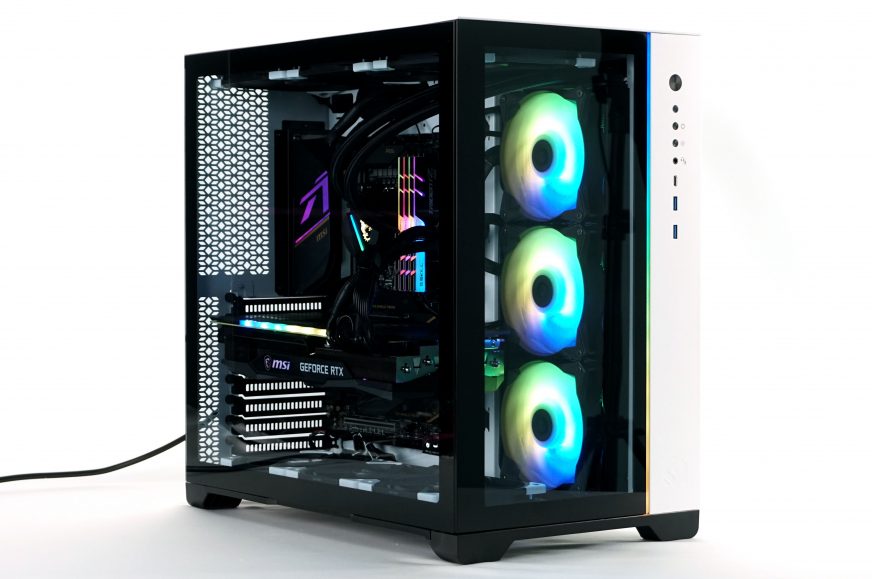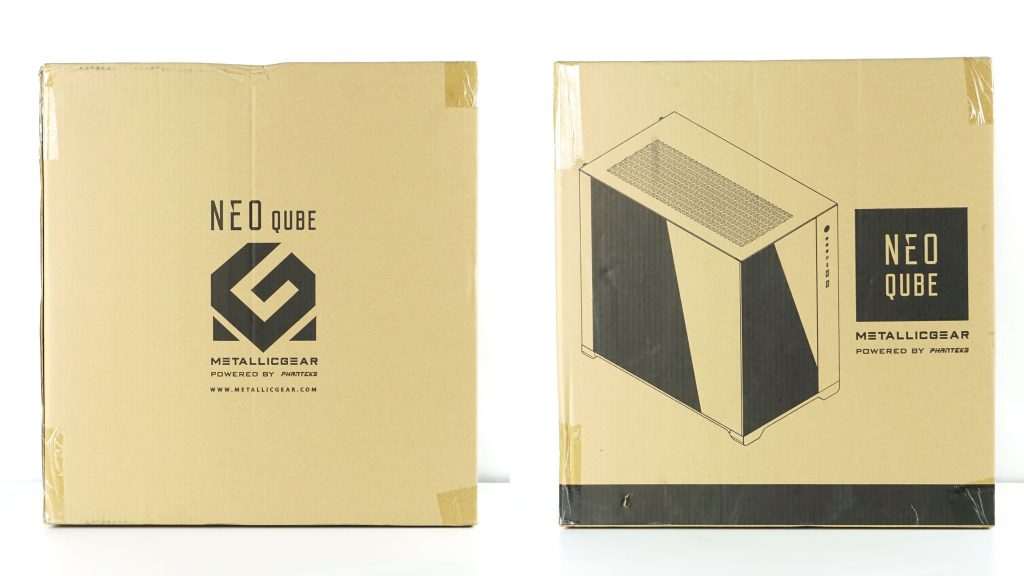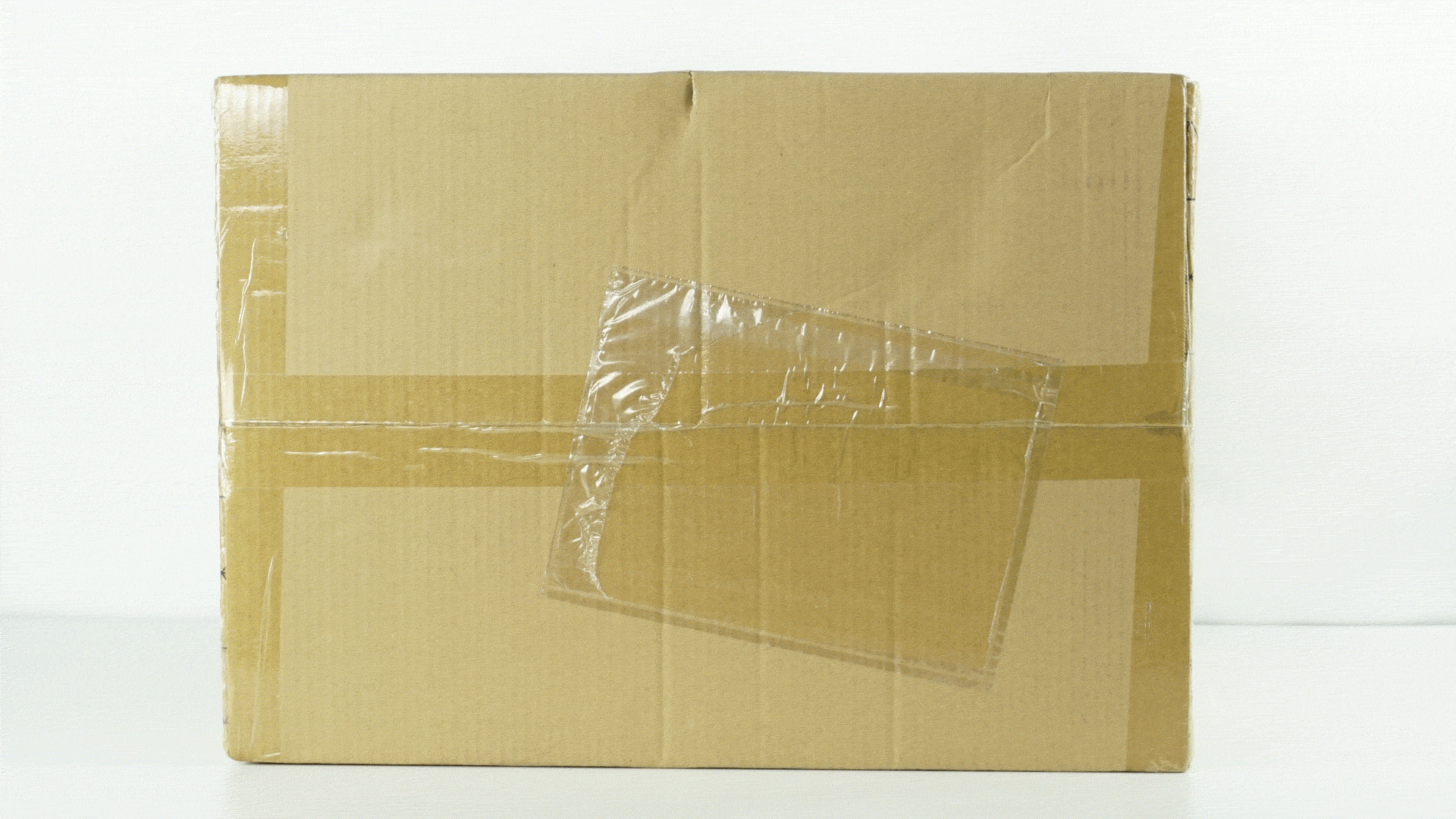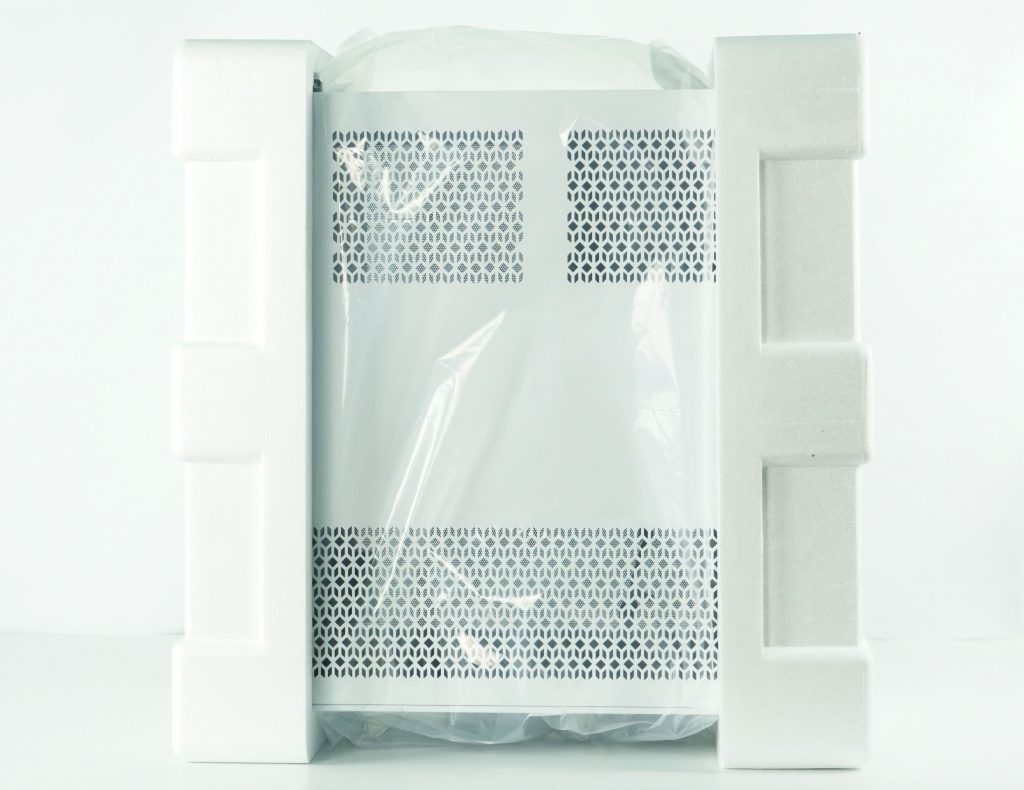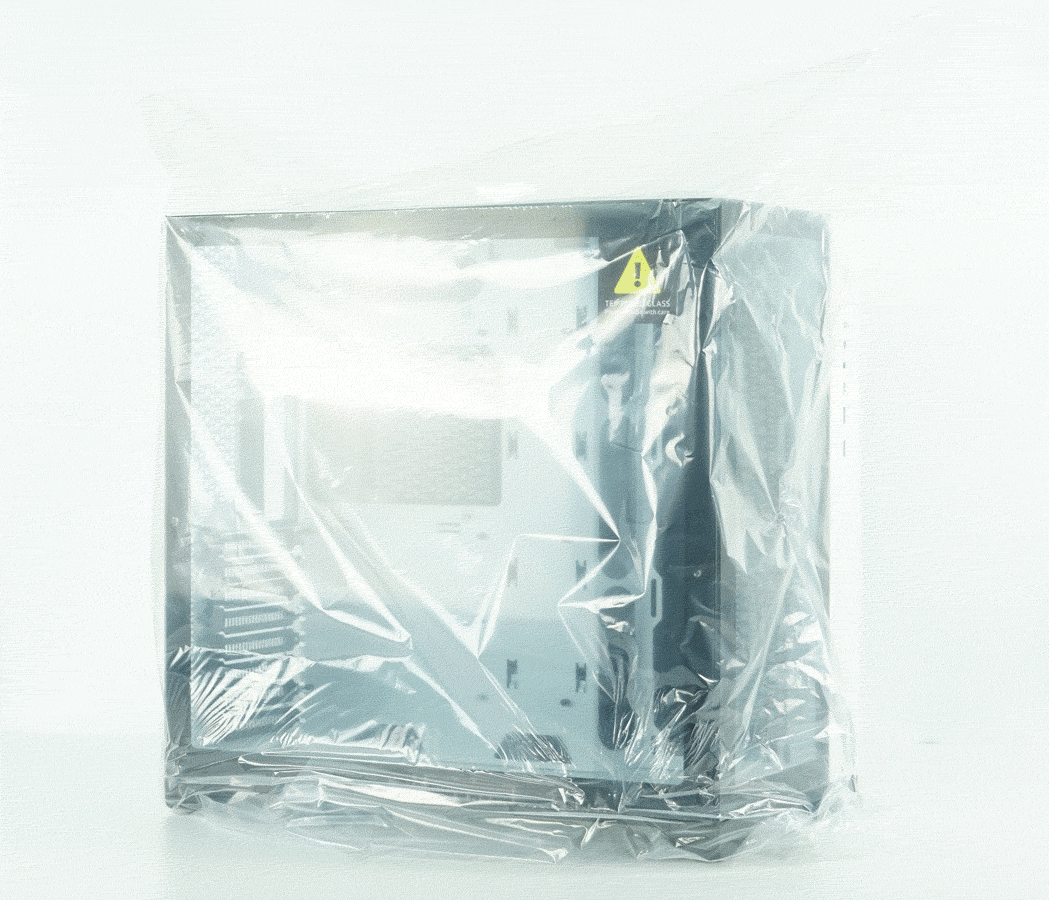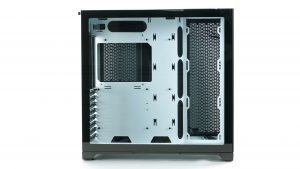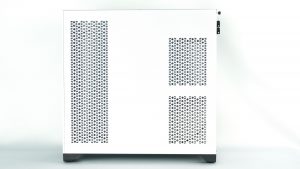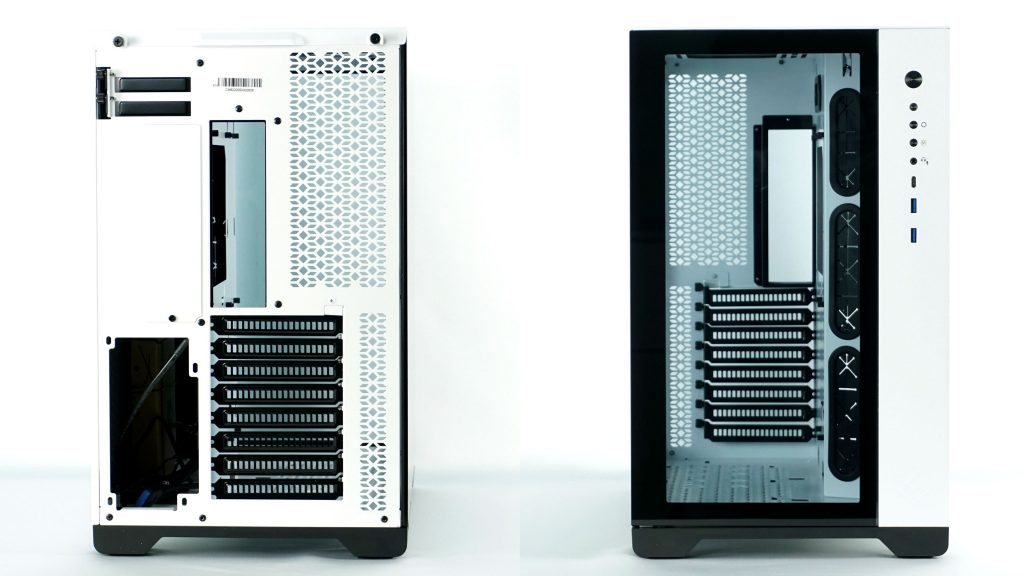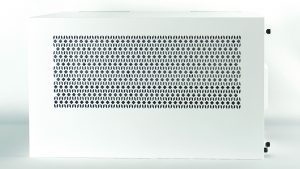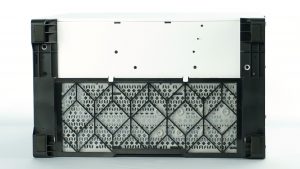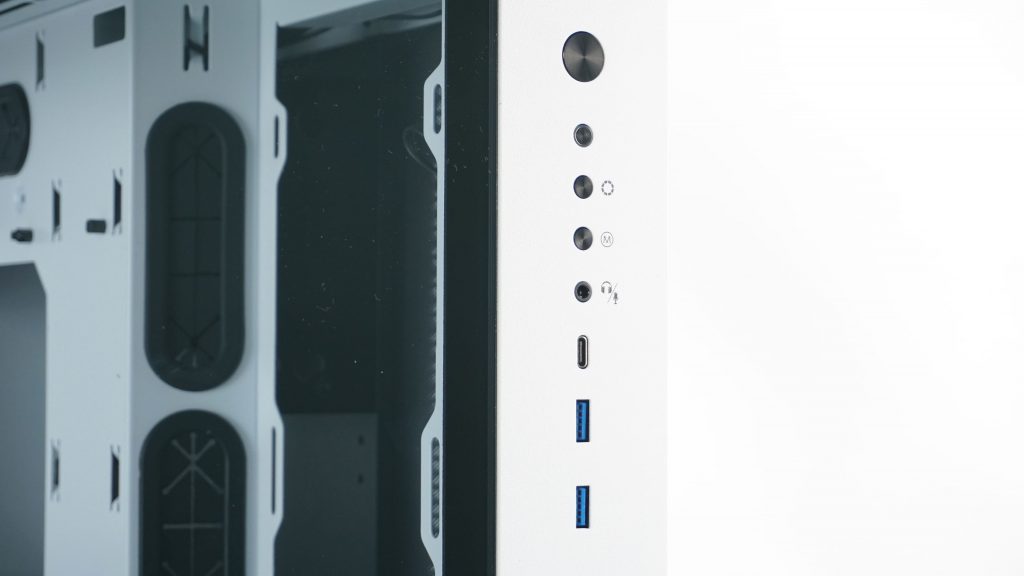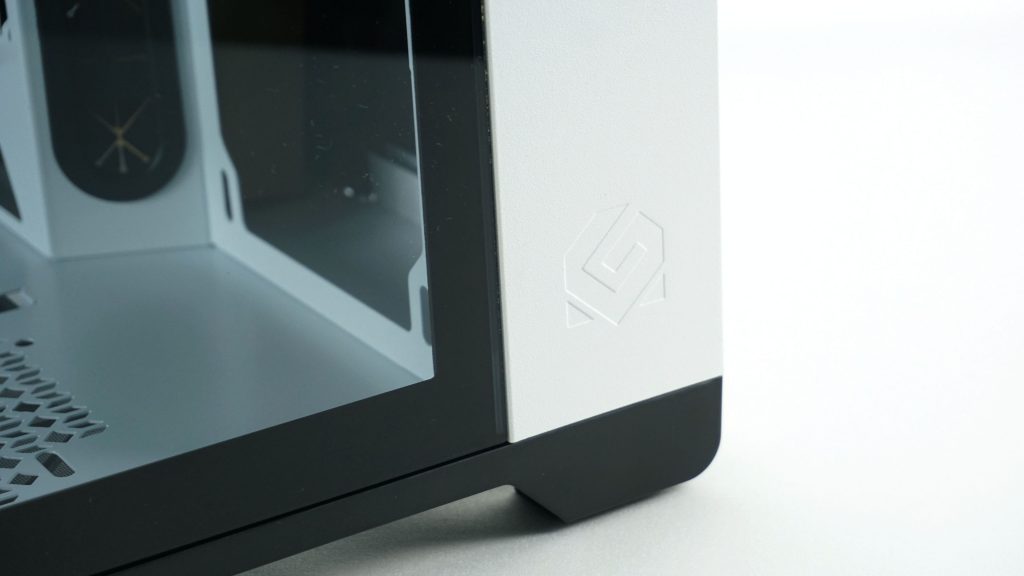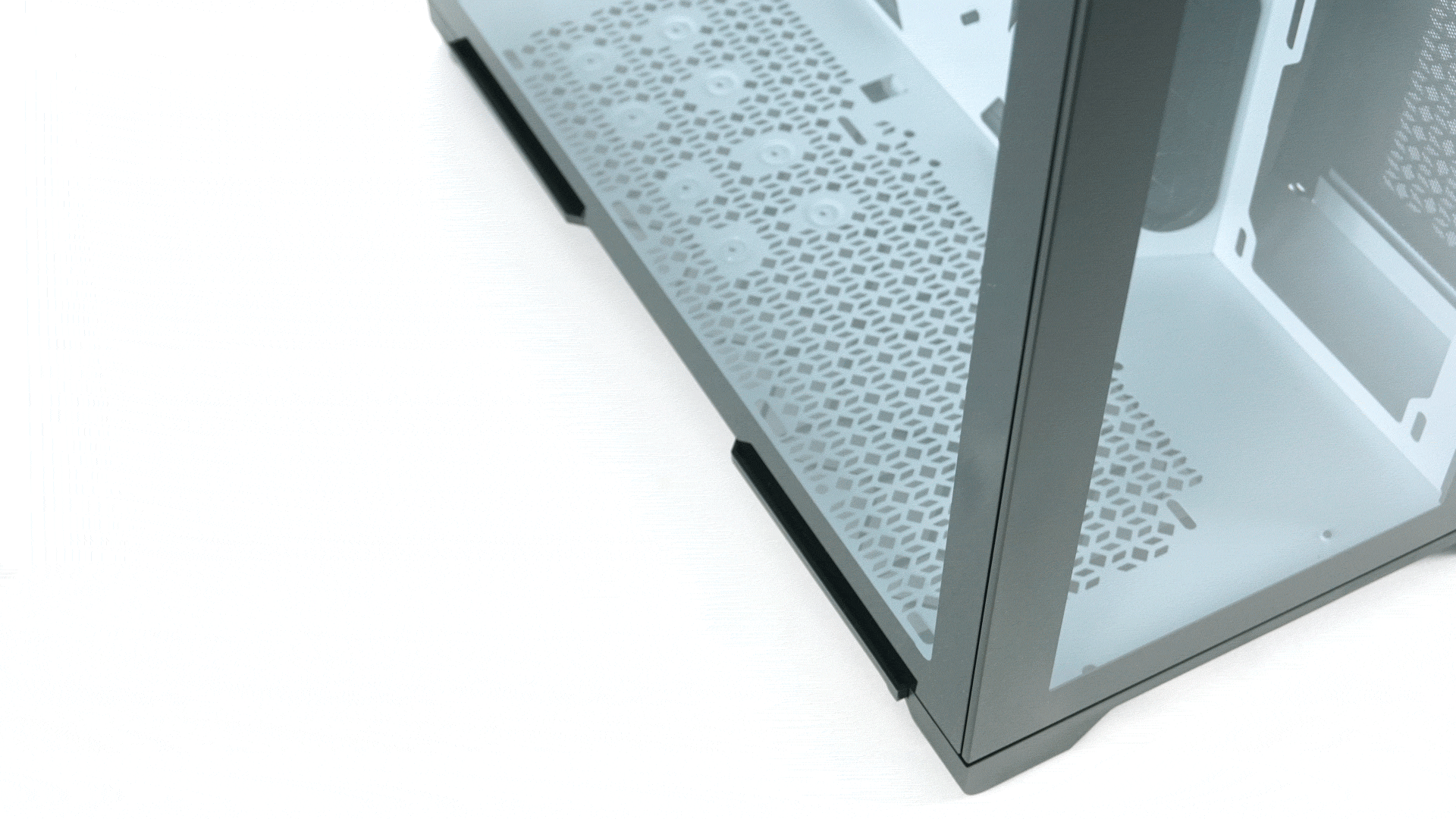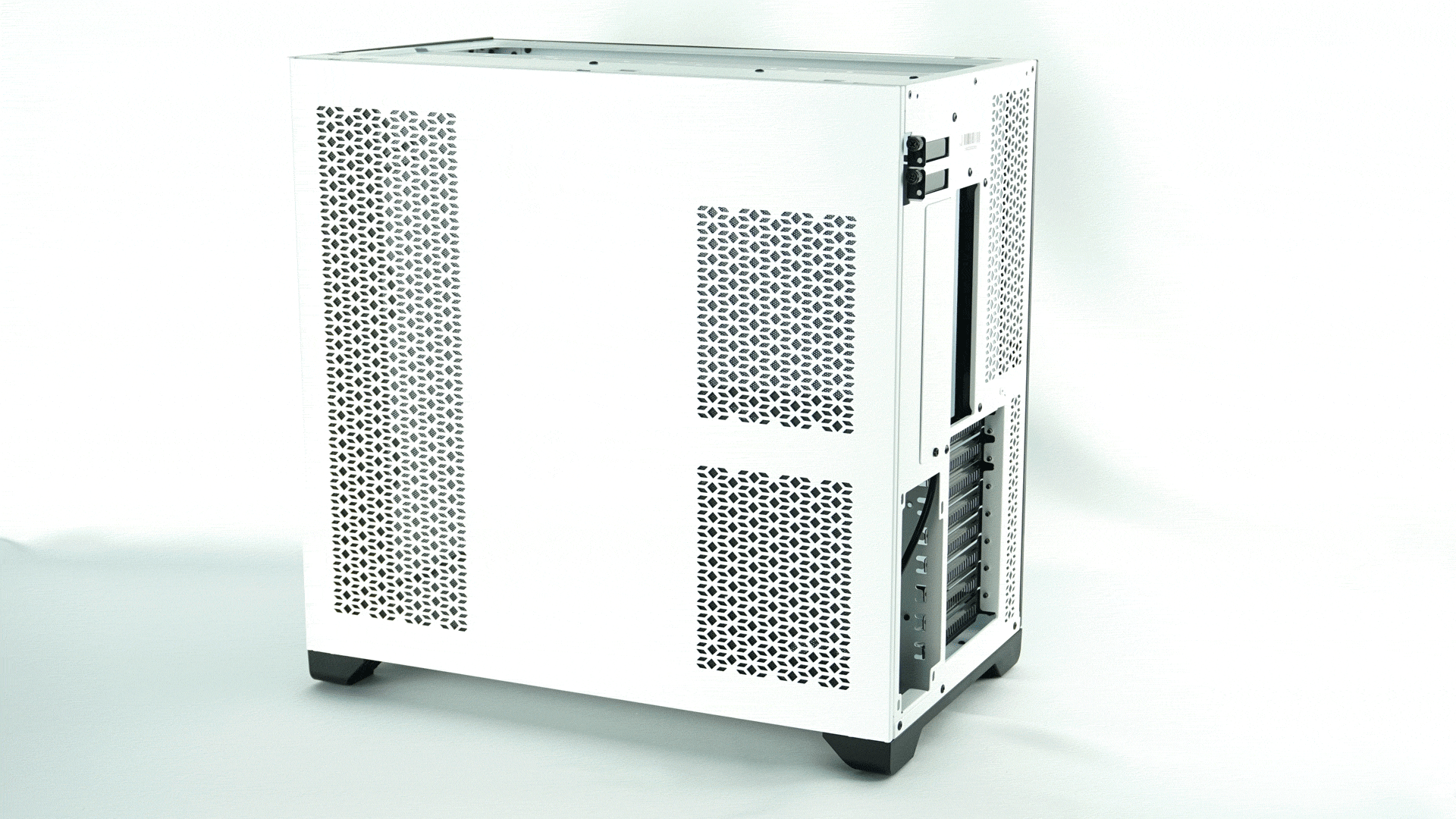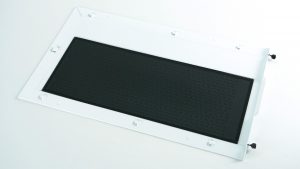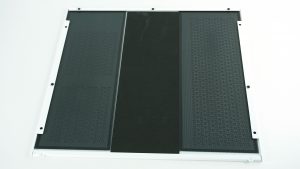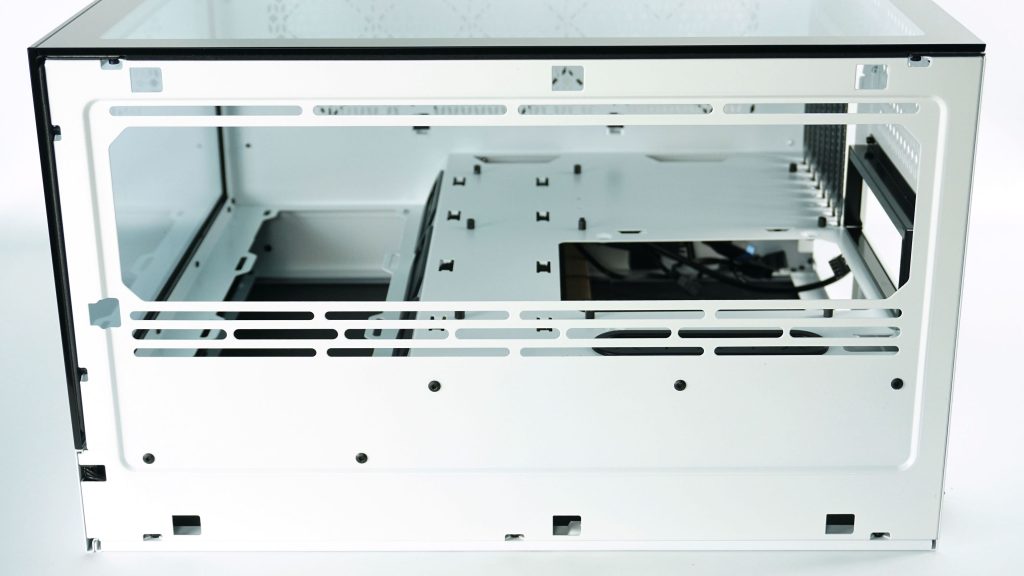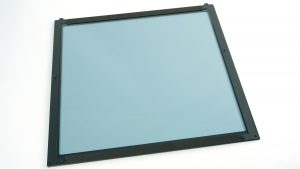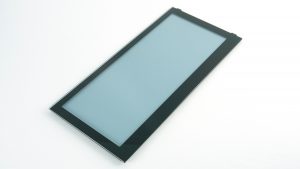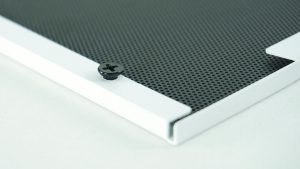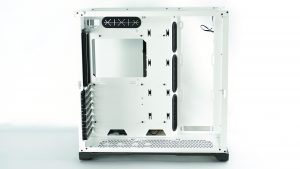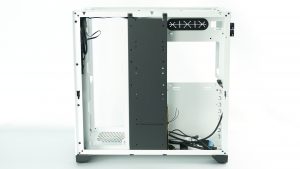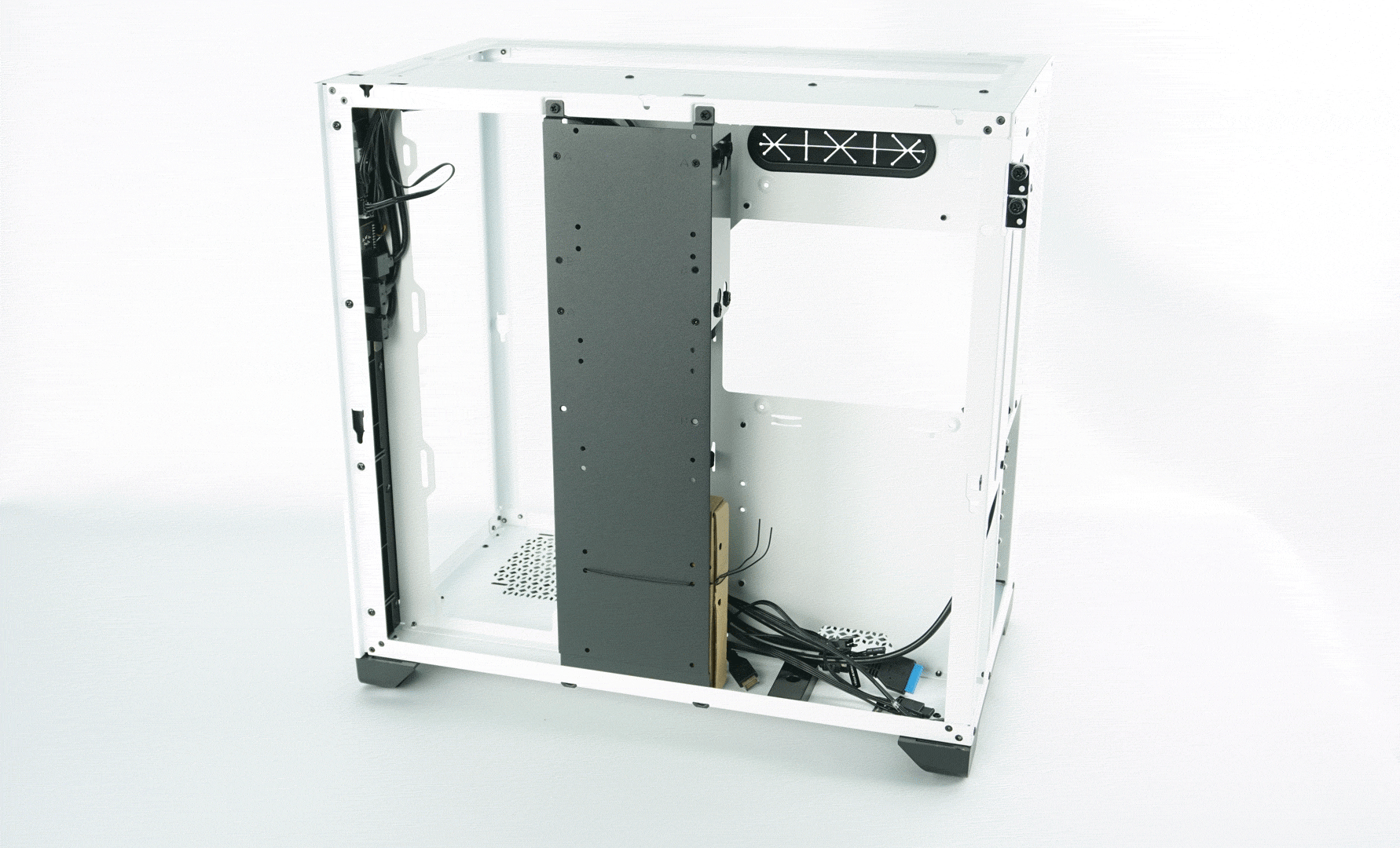Unboxing and details
With the arrival of new generation components, we had the opportunity to build our first rig, which I named MMN 3080. It is a combination of Metallic Gear, MSI and Noctua (MMN) and the key component, the new GeForce RTX 3080 graphics card in the MSI Gaming X Trio variant. In combination with the latest Core i9-10900K processor, this is the fastest gaming rig we’ve had in our editorial office.
Basic specs
| Parameters | Metallic Gear |
| Parameters | Neo Qube |
| Parameters | |
| Supported motherboard formats | Mini-ITX, mATX, ATX, E-ATX |
| Supported PSU format | ATX |
| CPU cooler | up to 148 mm |
| Graphics cards | up to 425 mm |
| Fan | 9× 120 mm, 4× 140 mm |
| Supported liquid radiators | 3× up to 360 mm, 1× up to 280mm |
| 2,5" positions | 5 |
| 3,5" positions | 2 |
| 5,25" positions | 0 |
| Dimensions [H/D/W] (and volume) | 450 × 460 × 270 mm (56 l) |
| Weight | 9.5 kg |
| Materials | steel + aluminium + 2× tempered glass |
| Connectivity | 2× USB 3.1 gen. 1 Type A + 2× USB 3.1 gen 2 Type C + 1× 3.5mm jack |
| Approximate price | 110 euros |
Details
The first component we will take a closer look at is the Metallic Gear Neo Qube case. Since the reviews of cases are rather strengths of my colleagues, I decided to look at the case from a practical point of view and build a set for demonstration and present a few impressions from the assembly and use.
If you haven’t yet read our test of Metallic Gear Neo V2, it should be noted that this is an offshoot of Phanteks, which deals rather with affordable cases. However, Neo Qube is currently the highest unit offered.
The packaging includes instructions and a pack of screws and ties. If I may criticize something, it is the non-separation of individual types of screws between individual bags (or more environmentally friendly dividers within one bag) together with their labelling. So far, I have only encountered such a dividing in more expensive cases. This is a small thing, but it will significantly simplify and speed up the installation, when one does not have to dig through 40 screws of five different types and look for the right type in the manual.
The case in the box is relatively well protected against careless manipulation of courier companies. However, an additional protection of the glass side panel would be needed, as nothing protects it except the cardboard and a few centimeters of space in the box.
After taking the case out of the plastic pack, the greatest pleasure awaits you when assembling a new PC set, that is, peeling off the foils from the glass. However, I recommend leaving it at the very end so that you do not stain the glass with your fingerprints while assembling.
The manufacturer refers to the case as mid-tower, i.e. the classic size of ATX cases. What differs from classic cases is the concept of two chambers, and thus placement of the power supply behind the motherboard tray. I won’t beat around the bush for long and I’ll say right away that the resemblance to the popular Lian Li PC-O11 Dynamic case is really big. With PC-011 Dynamic I have personal experience when I was building a rig for 5000 euros for my friend, about what we brought you a separate article. We then certainly will not avoid a comparison with this case.
At first glance, the cases are the same, but when you start noticing the details, the differences also begin to appear. An example could be a different color of the feet, the material of the front cover or a different shape of perforation on the side panel. You will also notice a significantly larger perforation on the back next to the motherboard I/O and also next to the PCIe slots. That, for example, is completely absent on Lian Li.
The difference is also visible on the front I/O, where there are up to four buttons instead of one. However, the ports are very similar with a pair of USB type A and one type C with 10 Gbps speed. Unlike Lian Li, there is a combined 3.5 mm audio jack for headphones and microphone and not two separate connectors.
There is a manufacturer’s logo on the bottom of the front panel. The PC-O11 Dynamic had this part of the case in a brushed aluminum design, which did not fit perfectly with the rest of the case.
Another difference is the pull-out plastic filter at the bottom of the ventilation, which you can remove very easily and quickly. Although I like magnetic filters, this solution is significantly better than that of Lian Li.
We’re getting to the disassembly of the case, which is quick and easy. You start at the top by removing the top panel. It is held in place by a pair of screws that you can unscrew with your fingers without having to use a screwdriver. The top panel prevents the rest of the panels from moving, it is a kind of “cap” of the case.
After its removal, you can remove the side panel, just push it up a bit. Of course, both panels have magnetic filters and the side panel has a soft insulating foam in the middle.
After removing the top cover, you can also remove the glass sides, which again can be lifted up a little. A small tip, placing the case on the back can make manipulating the glass parts easier.
The glass side panels also have a soft foam on the inside, which prevents the access of air but, above all, prevents the glass from knocking against the metal structure.
An interesting detail are the handles with which the sides hold in the frame of the case. In the case of a metal side panel, there are normal screws, in the case of glass side panels just metal protrusions.
After removing all the panels, we’re getting inside the case.
At the back you will find another removable part, which is a disk holder, also serving as a wiring cover.
Probably the most fundamental difference compared to the Lian Li case is the possibility to place a Mini ITX board on the back, while the PC-O11 Dynamic had room only for the second power supply. In Neo Qube, you can have two actual builds, but you must take into account that you will need either integrated graphics in the processor or graphics card with half the size, as the slots in the back are only half-sized. So much for the basic description of the case, let’s look at the build.
- Contents
- Unboxing and details
- Configuration
- Geekbench Compute, 3D/PCMark and Unigine Heaven/Superposition
- Gaming tests – Full HD
- Gaming tests – 4K
- Rating





